#griff barnett
Explore tagged Tumblr posts
Text










Holiday Affair (1949) Don Hartman
December 6th 2024
#holiday affair#1949#don hartman#janet leigh#robert mitchum#gordon gebert#wendell corey#esther dale#griff barnett#harry morgan#henry o'neill#christmas gift#the man who played santa claus#christmas 2024
11 notes
·
View notes
Text

Olivia de Havilland-Griff Barnett "La vida íntima de Julia Norris" (To each his own) 1946, de Mitchell Leisen.
4 notes
·
View notes
Text
Who's who in Demigods Odyssey?
Onyx - DM
Nova - Psyche Travieso
Tavin - Sony Spiegel-Beckett
Forest - Gabrielle Alden
Trey - Finnley Dubois
Cedar - Griff Barnett
Mylo - Roman Marino
4 notes
·
View notes
Text


















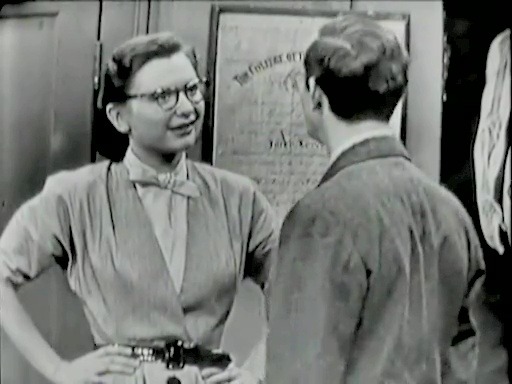
From the Golden Age of Television
Series Premiere
Mr. Peepers - Mr. Peepers Gets a Job - NBC - July 3, 1952
Sitcom
Running Time: 30 minutes
Written by David Swift and Jim Fritzell
Produced by Fred Coe
Directed by James Sheldon
Stars:
Wally Cox as Robinson J. Peepers
Joseph Foley as Mr. Gabriel Gurney
Norma Crane as Miss Rayola Dean
David Tyrell as Mr. Charlie Burr
Leonard Elliott as Mr. Wadd
Georgia Harvey as Miss Monitor
Penny Santon as Mrs. Gilroy
Lee Barnett as Norton
Griff Evans as Mr. Noble
#Mr. Peepers Gets a Job#Mr. Peepers#TV#Sitcom#1950's#1952#NBC#Wally Cox#Joseph Foley#Norma Crane#David tyrell#Leonard Elliott#Series Premiere
6 notes
·
View notes
Text










Scandal Sheet (1952)
"You wanted to be a big man, Mark. This will make you famous beyond your most ambitious dreams. Great story? I've waited all my life for a story like this."
"Well, you've got it, Charlie. But you're not going to write it."
#Scandal Sheet#The dark page#samuel fuller#film noir#american cinema#films i done watched#Phil Karlson#Ted Sherdeman#Eugene Ling#James Poe#Broderick Crawford#Donna Reed#John Derek#Rosemary DeCamp#Henry O'Neill#Harry Morgan#James Millican#Griff Barnett#Jonathan Hale#Jay Adler#Another fun excursion into the grimy gritty worlds of Sam Fuller. You'd be forgiven for thinking he had a pretty dim view of journalism#After Power of the Press and now this film (based on a novel by Fuller) but actually he'd started off in newspapers himself (making crime#Reporter at 17! Those were the days huh. The past sure is another country thank god). Where PotP was a moralising bit of war propaganda#This is pure entertainment: the best kind of shady noir in a grubby world of tabloid hacks and street bums. John Derek is our hero I guess#More by process of elimination than anything else; Donna Reed fares much better as the crusading honest reporter with a conscience who's#Chosen the wrong paper and the wrong boss to work for. But this belongs to Broderick Crawford as editor in chief and murderer at large#He's magnificent to watch as he struggles between covering up his crime and the irresistible urge to be the paper that scoops a major story#My main criticism is simply that the film is exactly 30 seconds too long; it ends on an absolutely perfect shot through a shadowy newsroom#To a brightly lit office in the distance but then tacks on some unnecessary moments of needless exposition and a tacky final image. Real#Frustration hours here. Otherwise this is fairly mid level filmmaking not especially flashy but compelling enough
7 notes
·
View notes
Text
The Duel At Silver Creek 1952

#the duel at silver creek#audie murphy#stephen mcnally#faith domergue#susan cabot#gerald mohr#eugene iglesias#lee marvin#walter sande#james anderson#george eldredge#victor adamson#carl andre#emile avery#stanley blystone#griff barnett#george bell#ralph bucko#roy bucko#chet brandenburg#forest burns#chuck hamilton#frank hagney#steve darrell#jack kenny#harry harvey#cactus mack#jack montgomery#lee morgan#monte montague
17 notes
·
View notes
Photo




Scandal Sheet | Phil Karlson | 1952
Griff Barnett, John Derek, Donna Reed, Broderick Crawford
17 notes
·
View notes
Photo
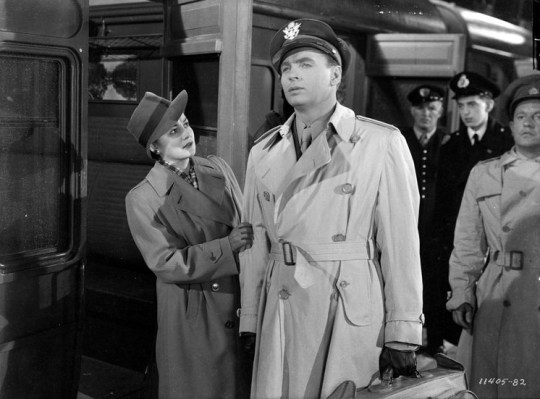
To Each His Own (1946)
When Olivia de Havilland passed away at 104 years of age last July, she was one of the last-surviving major stars of Hollywood’s Golden Age. The Golden Age mostly corresponds to the Hollywood Studio System in place at the time. In that system, studios contracted actors, directors, screenwriters, composers, costume designers, cinematographers, and more – sometimes loaning their personnel out to other studios. Before making To Each His Own, de Havilland sued her previous employer, Warner Bros., for unlawfully suspending her after she rejected a role as well as adding six months to her contract because of the suspension. De Havilland won her court case and the De Havilland Law remains in Californian law books today. But a furious Jack Warner retaliated, conspiring with other Hollywood executives to blacklist De Havilland by calling the actress “difficult” to work with.
For three years de Havilland went without work in Hollywood. During that time, she busied herself with productions of Lux Radio Theatre, volunteered at the Hollywood Canteen, and entertained American troops in the Pacific theater as part of a USO tour. Nevertheless, as one of the best-regarded actresses in Hollywood even before Warner’s blacklisting attempts, she was too good an actress for producers not to be interested in her services. In 1945, after signing a two-film deal with Paramount, de Havilland began work on a star vehicle for her, the melodrama To Each His Own. De Havilland enjoyed the screenplay by Charles Barckett (1939’s Ninotchka, 1950’s Sunset Boulevard) and Jacques Théry (primarily a novelist; 1942’s Joan of Paris), but believed it could be improved with revisions and a director she had confidence in. Her first choice for director was Mitchell Leisen, who guided de Havilland to an Academy Award nomination in the romantic drama Hold Back the Dawn (1941). Leisen reluctantly agreed to take up the project but, as de Havilland started developing her character as the production progressed, he knew he had a worthwhile production on his hands. He was right, and so were de Havilland’s instincts – To Each His Own may not distinguish itself technically, but the acting and revised screenplay elevate this melodrama.
Somewhere in London, a middle-aged American woman named Josephine “Jody” Norris (de Havilland) is walking the city’s blacked-out streets (as mandated by the government) on New Year’s Eve. It is World War II, and Jody volunteers herself some nights to be a fire warden. On this holiday evening, only she and Lord Desham (Roland Culver) are in the office. After some persuasion from Desham, the two head out for tea. While at tea, Jody learns a Gregory Piersen is arriving in London on a late train. Immediately, she leaves teatime with Lord Desham and dashes to the train station. There, in flashback, we learn that Jody was the daughter of her pharmacist father (Griff Barnett) in a small town named Piersen Falls. During World War I, a dashing U.S. Army Air Service fighter pilot Bart Cosgrove (John Lund in one of two roles) visits for a bond rally. Unexpectedly, and without anyone suspecting a thing, they fall in love. After hearing Bart has perished overseas, and a pregnant Jody decides to have and raise their child. She attempts to choreograph her own pregnancy, delivery, and first days of motherhood by making it appear as if she has “adopted” her own baby – all to avoid local scandal. An unfortunate twist of fate means that she will have to surrender her son, Gregory (nicknamed “Griggsy”), and watch him grow without the knowledge of his true parents.
Also starring in To Each His Own are Mary Anderson as Corinne Piersen, Phillip Terry as Alex Piersen, Bill Goodwin as Mac Tilton, Virginia Welles as Liz Lorimer, and a sassy Victoria Horne as Nurse Daisy Gingras.
Released in the spring of 1946, one can imagine how audiences might have viscerally reacted to the film’s setting. Through the Second World War, American audiences flocked to a greater proportion of patriotic movies intended to rally morale, propaganda, and war movies that became less sanitized as the war itself dragged on. Films concerning civilian self-sacrifice during this period typically downplayed said self-sacrifice for nationalism. To Each His Own embeds themes of wartime sacrifice into its subtext, even if the film does not directly link Jody’s decades-long personal sacrifice to the Allied effort in World War II. That Brackett and Théry allow Jody to be an imperfect, morally challenged protagonist is a development not often seen in melodramas where a mother gives up their child (a subcategory within the subgenre; see 1931’s The Sin of Madelon Claudet and 1939’s The Old Maid). In the film’s final act, we see Jody skirting the boundaries of what would be the right thing to do. While taking care of a young Gregory (his adopted parents, sympathetic to her plight, allow her babysitting privileges), she wants to do what is best for her son, but sometimes this might rub up against the parental rights of Gregory’s adopted parents.
In Jody, the viewer intuits her desire for love and the unbearable separation – in extraordinary circumstances – of mother and son. For the parents among the audience members who saw To Each His Own during its theatrical run, similar emotions must have coursed over them for most of the film. Permanent and temporary separations from loved ones can wreak havoc on a person’s psychology. Brackett and Théry’s screenplay is sensitive to this trauma and resolve it in a way as touching as the Motion Picture Production Code (the self-censoring guidelines enforced upon major American studio movies from 1934-1968) would allow. The Production Code Administration (PCA), which enforced the Code, frowned upon the fact that Gregory was an illegitimate child born out of wedlock and requested wholesale changes to the film’s resolution of its-child separation.
While negotiating with the PCA, Brackett succeeded in arguing that the film’s ending was the only sensible conclusion for To Each His Own. Despite winning the argument, Brackett made concessions in order to keep his ending, including having several characters treat Jody’s affair as sinful in scenes leading up to and just after Gregory’s birth. Not that the compromises compromise the film too much. Given cultural norms in the early twentieth century, the amount of screentime concerning Jody’s potential shame if her secret was revealed feels appropriate. The intentions from the PCA might have been to moralize, but To Each His Own does not overcompensate for its lead character’s supposed immorality. And if the film’s preserved ending may not satisfy persnickety viewers too focused on narrative probability, it is at the very least a poignant and deserved conclusion.
Over the course of the story’s three decades, Olivia de Havilland must transform from a naïve young adult reveling in her attractiveness to men to a hardened, middle-aged spinster who has all but put her past behind her. While de Havilland utilized different perfumes to evoke Jody’s mentality for progressing time periods, makeup supervisor Wally Westmore (1953’s The War of the Worlds, 1958’s Vertigo) and costume designer Edith Head (1950’s All About Eve, 1973’s The Sting) and their teams subtly guide the viewer to realize Jody’s character growth even before she utters a word. Harsher lighting over the passing time periods also assists in making de Havilland look older. In time, Jody – once a somewhat sheltered, but flirtatious assistant in her father’s drugstore – loses her playfulness and vivaciousness, but retains an insecurity over social tact. That insecurity is evident when she encounters an adult Gregory, who appears to have no recollection of who he once called “Aunt Jody”. The viewer sees the simultaneous hope, fearfulness, and suppressed agony on her face when adult Gregory is not looking her direction. Everything de Havilland has done up to this point in her performance – her witticisms and pointed requests, wordless joy and sorrow – suffuses the final half-hour with Jody’s regrets and desire to be the mother she never could be. All of Jody’s frailties and inner strength pour through in the end and we, the viewers, feel every hint of embarrassment, fortitude, desire, and self-doubt. This is a masterclass leading performance from Olivia de Havilland, who would deliver an even better performance on the horizon.
Only prominent in the bookends of the film, Roland Culver (1943’s The Life and Death of Colonel Blimp, 1945’s Dead of Night) provides a charismatic turn as Lord Desham. Culver may not express too much emotionally – those British men and their stiff upper lips are sentimentalists inside, right? – but he has a curious authoritative charm that permeates each scene. Here is a fellow who has garnered a lot of wisdom and a droll wit over his years, but he would rather listen than soliloquize. To Each His Own’s conclusion is not nearly as impactful without Culver as Desham. Unfortunately, one can’t sing the same praises for John Lund in his dual role. In both roles, Lund just seems too stiff and his dialogue delivery sounds too forced at times. This can be somewhat attributed to Lund’s discomfiture in playing a dual role and the brown hair rinse over his naturally blonde hair.
Olivia de Havilland’s return to the silver screen was well-received by audiences and across the film industry. She would not make another film with Warner Bros. until after Jack Warner’s retirement in 1973 (but the less said about 1978’s The Swarm, the better). A career resurgence would follow To Each His Own – this time, she was making movies on her own terms. The precedent established by the Californian state court in De Havilland v. Warner Bros. Pictures continues to protect actors and actresses from contractual exploitation from movie studios and grants them greater creative freedom (and, as of 2009, the precedent now applies to the music recording industry).
The appeal of To Each His Own extended overseas, most notably in a Bollywood remake entitled Aradhana (1969), starring Sharmila Tagore, Rajesh Khanna, and Sujit Kumar. By this point in the review, I’m guessing you, the reader, are a bit fatigued with all the Olivia de Havilland worship. Yet, her importance to the success of To Each His Own is too critical to the film itself and her importance to Hollywood’s history cannot be understated. As good as the costume design, lighting, and supporting performances might be and as emotional as the script is, none of it works without its central star.
My rating: 8/10
^ Based on my personal imdb rating. Half-points are always rounded down. My interpretation of that ratings system can be found in the “Ratings system” page on my blog (as of July 1, 2020, tumblr is not permitting certain posts with links to appear on tag pages, so I cannot provide the URL).
For more of my reviews tagged “My Movie Odyssey”, check out the tag of the same name on my blog.
#To Each His Own#Mitchell Leisen#Olivia de Havilland#John Lund#Mary Anderson#Roland Culver#Phillip Terry#Bill Goodwin#Griff Barnett#Victoria Horne#Charles Brackett#Jacques Thery#Victor Young#Edith Head#Wally Westmore#TCM#My Movie Odyssey
0 notes
Text
I listened to a ton of music this year and I wanted to try and make a definitive list of my favorites, so here are the albums and EPs I loved from 2021
EPS
1. Militarie Gun - All Roads Lead To The Gun, All Roads Lead To The Gun II
2. Beach Bunny- blame game
3. Tierra Whack - R&B, Pop
4. Burial, Blackdown - Shock Power of Love EP
5. Tkay Maidza - Last Year Was Weird, Vol 3
6. Mannequin Pussy - Perfect
7. Sorry - Twixtustwain
8. Meet Me @ The Altar - Model Citizen
9. Move - Freedom Dreams
10. Action News - Failed State
11. Pinkshift - Saccharine
12. Hey, ILY! - Internet Breath
13. Bruce Lee Band - Division in the Heartland EP
14. Bone Cutter - Bone Cutter
15. Poppy - Eat
16. Spill Tab - Bonnie
17. GEL - Violent Closure
18. Sainte- Local MVP
19. Alice Longyu Gao - High Dragon and Universes
20. SOUL GLO - Dis***** Vol 1, Dis****** Vol, 2
21. Frances Forever - paranoia party
22. No Longer At Ease - No Longer At Ease
23. UNIQU3 - Heartbeats
24. Mikau & ps.you’redead- razor x blade
25. Francis of Delirium - Wading
26. Boyish - We’re all gonna die, but here’s my contribution
27. Blair - Tears to Grow
28. Arm’s Length - Everything Nice
29. Fresh - The Summer I Got Good At Guitar
30. Elliot Lee - Queen Of Nothing
31. ELIO - Can You Hear Me Now?
ALBUMS
1. girl in red - if I could make it go quiet
2. Olivia Rodrigo - SOUR
3. Billie Eilish - Happier Than Ever
4. Pinkpantheress - to hell with it
5. Turnstile - Glow On
6. Tyler, The Creator - Call Me If You Get Lost
7. MARINA - Ancient Dreams In A Modern Land
8. Jeff Rosenstock - SKA DREAM
9. Dry Cleaning - New Long Leg
10. Sleaford Mods- Spare Ribs
11. Jazmine Sullivan -heaux tales
12. Ashnikko- DEMIDEVIL
13. Doja Cat - Planet Her
14. Illuminati hotties - Let Me Do One More
15. Amyl and The Sniffers - Comfort To Me
16. UPSAHL - Lady Jesus
17. Pom Pom Squad - Death Of A Cheerleader
18. WILLOW - lately I feel EVERYTHING
19. Section H8 - Welcome to the Nightmare
20. slowthai - TYRON
21. Claud- Supermonster
22. Colleen Green - Cool
23. Dave - We’re All Alone In This Together
24. The Marias - CINEMA
25. Shame- Drunk Tank Pink
26. Noga Erez - KIDS
27. BIA - FOR CERTAIN(deluxe)
28. Jorja Smith - Be Right Back
29. Goat Girl - On All Fours
30. Danny L Harle - Harlecore
31. Fiddlehead - Between The Richness
32. Rid of Me - Traveling
33. J. Cole - The Off-Season
34. Aya - im hole
35. Squid - Bright Green Field
36. Baby Queen - The Yearbook
37. Courtney Barnett - Things Take Time, Take Time
38. Lana Del Rey - Chemtrails over the Country Club
39. Deb Never - Where Have All The Flowers Gone?
40. Boys Noize - +/-
41. Home Is Where - I Became Birds
42. Planet 1999- Devotion (deluxe)
43. Self Esteem - Prioritise Pleasure
44. The Chisel - Retaliation
45. Scowl - How Flowers Grow
46. Pet Symmetry - Future Suits
47. Chubby and the Gang - The Mutt’s Nuts
48. Pretty Sick - Come Down
49. Mogwai - as the love continues
50. Griff - One Foot In Front Of The Other
51. Viagra Boys - Welfare Jazz
52. One Step Closer - This Place You Know
53. Hayley Williams - FLOWERS for VASES/ descansos
54. Little Simz - Sometimes I Might Be Introvert
55. Crumb - Ice Melt
56. Inhaler - It Won’t Always Be Like This
57. Radiohead - KID A MNESIA
58. Death Cab For Cutie - The Photo Album (Deluxe Edition)
59. Sugababes - One Touch (20 year anniversary edition)
60. Amy Winehouse - At The BBC
15 notes
·
View notes
Text
All the bands I saw at Primavera Sound

Yasmin Williams
Amyl and the Sniffers
Khruangbin
Griff
Cazzu
Tarta Relena
Big Thief
Metronomy
King Gizzard and the Lizard Wizard
Charli XCX
Mdou Moctar
Tyler, the Creator
Sampa the Great
Hurray for the Riff Raff
Tops
Brittany Howard
Courtney Barnett
Stella Donnelly
Lorde
The Strokes
M.I.A.
Genesis Owusu ^
Angel Bat Dawid
Paranoid 1966
La Zowi
Shellac
The Weather Station
Celeste
Pantocrator * ~
Sky Ferreria
Yeah Yeah Yeahs
LaBlackie
Tame Impala
Angèle
Mura Masa
Viagra Boys
* Pictured
~ The Best
^ Honorable mention
4 notes
·
View notes
Text
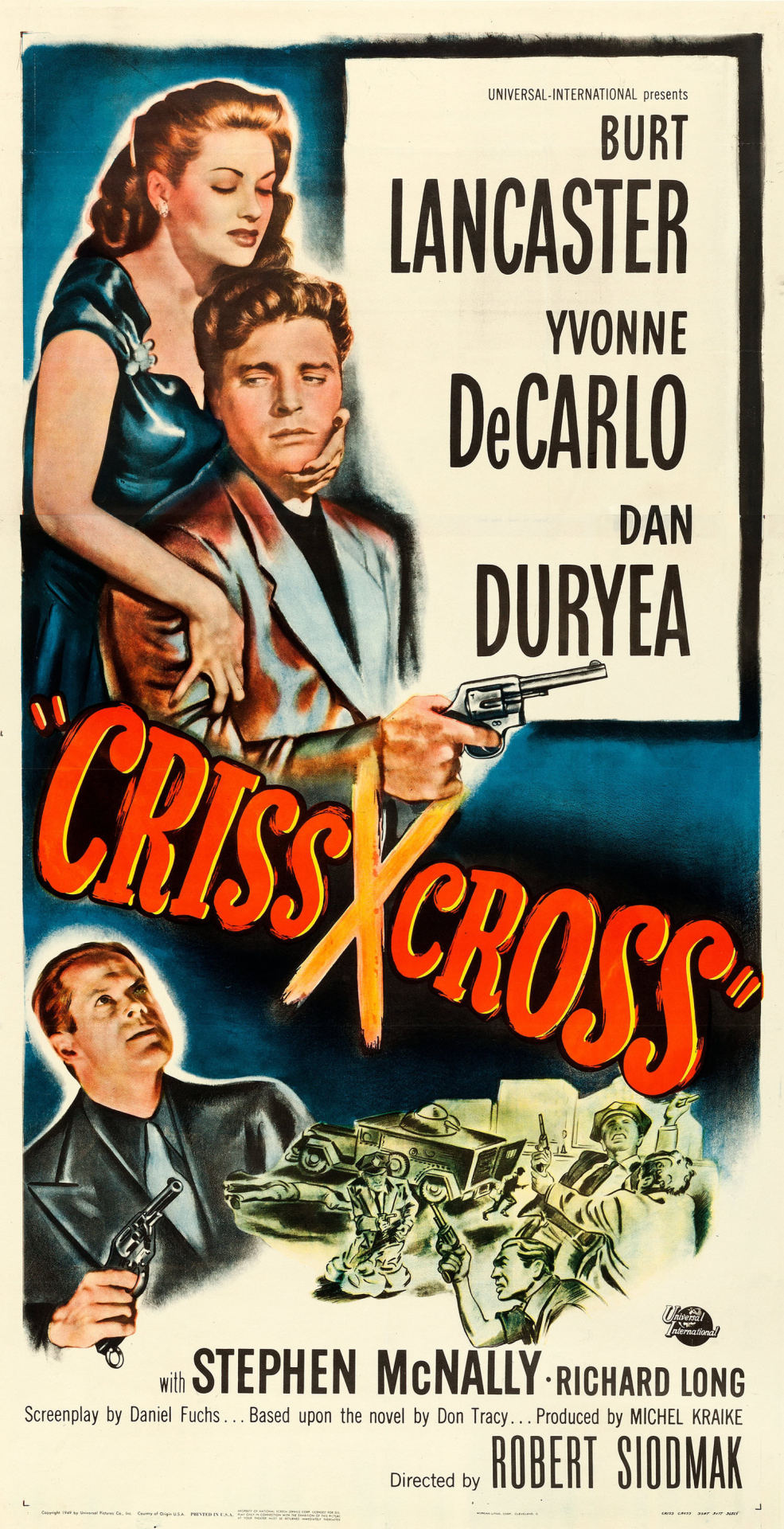
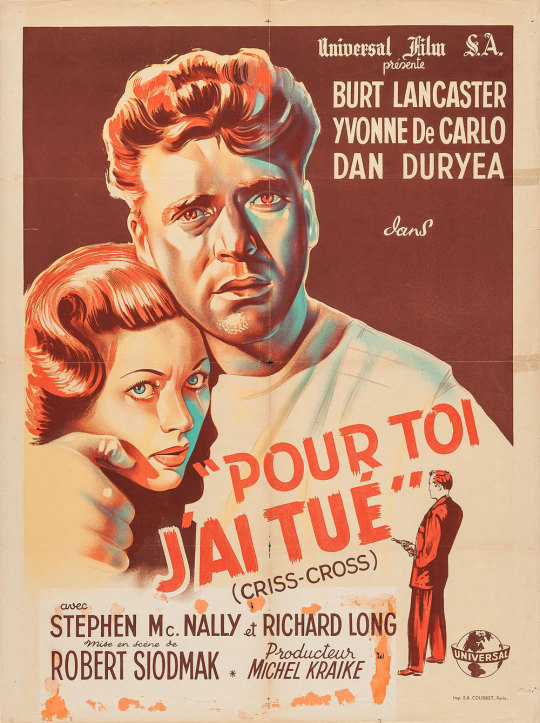
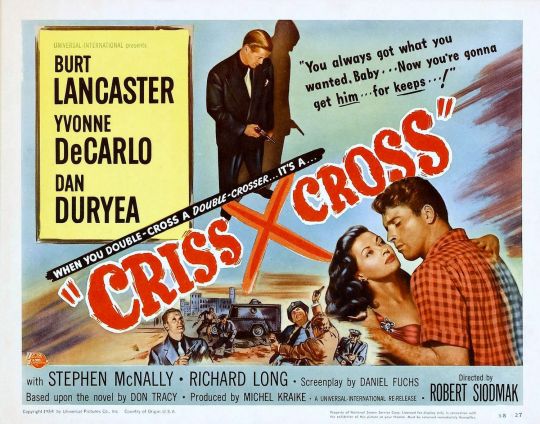
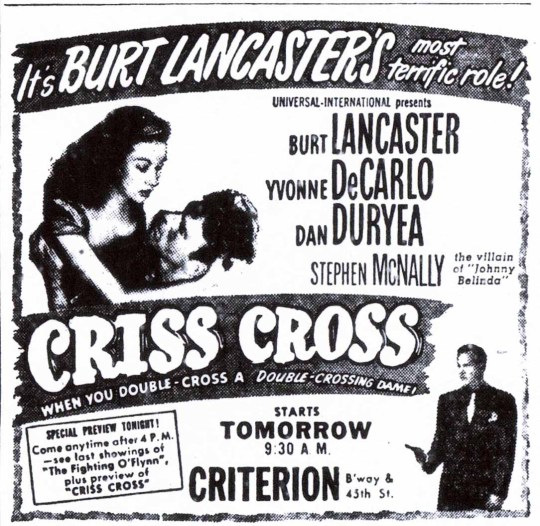
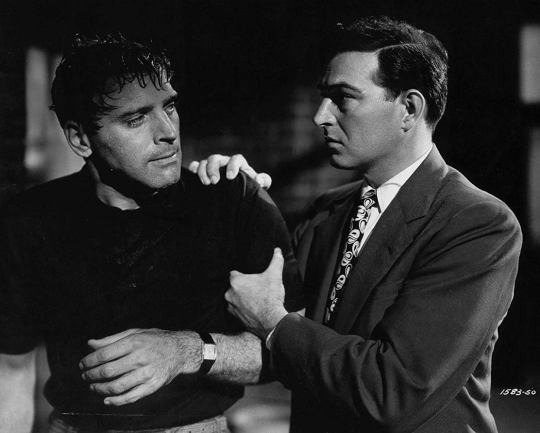
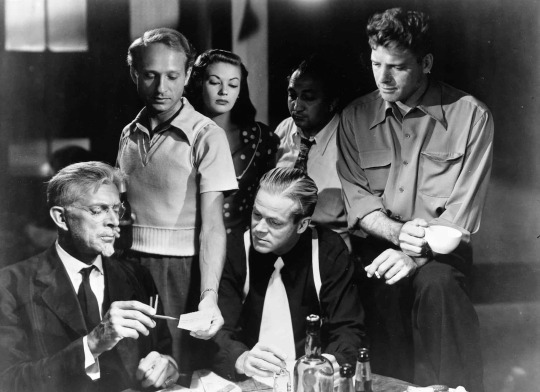

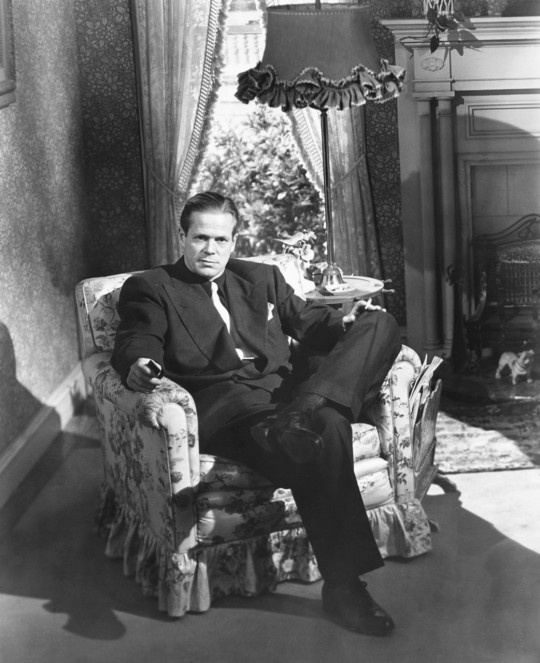
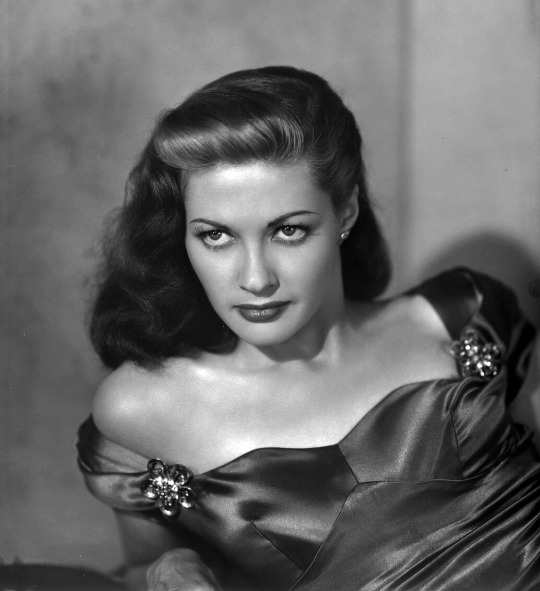
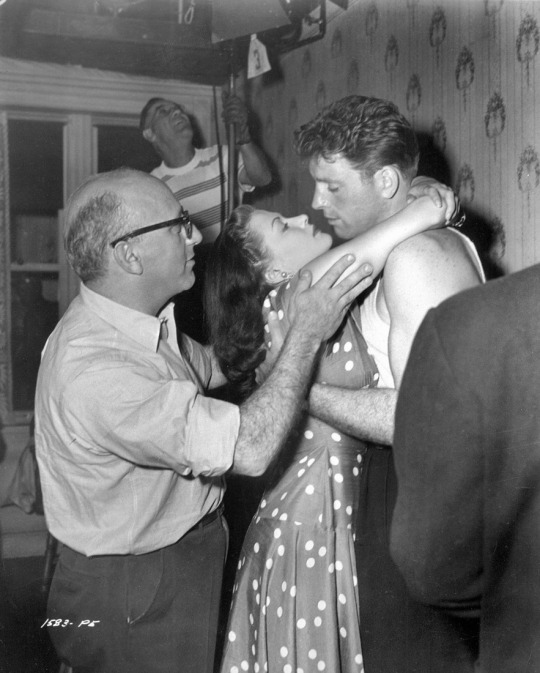
Criss Cross (1949) Robert Siodmak
December 10th 2023
#criss cross#1949#robert siodmak#burt lancaster#yvonne de carlo#dan duryea#stephen mcnally#percy helton#joan miller#edna holland#griff barnett#tony curtis
11 notes
·
View notes
Text
2021 in Music
Here is a note about the music I listened to in 2021. I hope you enjoy it!
Favorite Albums of 2021
Promises - Floating Points, Pharoah Sanders & The London Symphony Orchestra

I could cheese it up and try to articulate something about how Promises can imbue wonder into the ordinary and blah blah blah... but I like the way this review from Paste puts it:
“Promises is the kind of album that can rearrange the molecules in the room.”
Word.
I remember studying for the LSAT one Saturday morning earlier this year and deciding to put this one on. I thought it was boring. “Mmm... nice background music!”, or so I thought.
By Movement 6, I had a thousand yard stare and onset existential crisis.
How often do I give my full attention to really listening? (and not just to music...) How often is it taken from me?
Pretty rare, in my experience. For better or for worse.
Anyway, shoutout to this one for inflicting irreparable damage to my LSAT score!
Favorite Songs:
Movement 6
Movement 7
Movement 8
I Don’t Live Here Anymore - The War On Drugs

Sometimes something finds you at the right moment; a relationship, a nice view, the peanut butter bacon burger at Fat Guys...
I spun this one over and over and over and I think its because it found me at a good time? Musically, lyrically... it really moved me.
“Feel the storm coming on Feel the darkness at your gate Live the loneliness of life Keep on moving at your pace Ain't the sky just shades of gray Until you seen it from the other side? Oh, if loving you is the same It's only some occasional rain”
Just shades of gray, indeed.
Favorite Songs:
Harmonia’s Dream
Change
I Don’t Live Here Anymore (feat. Lucius)
Occasional Rain
_______________________________________________________________________
Runners up
Ignorance - The Weather Station
Talk Memory - BADBADNOTGOOD
My Morning Jacket - My Morning Jacket
Music For Psychedelic Therapy - Jon Hopkins
An Overview on Phenomenal Nature - Cassandra Jenkins
Far In - Helado Negro
Day/Night - Parcels
Liked It
Sympathetic Magic - Typhoon
Two Saviors - Buck Meek
Good Woman - The Staves
A Billion Little Lights - Wild Pink
L.W. - King Gizzard & the Lizard Wizard
CARNAGE - Nick Cave & Warren Ellis
As the Love Continues - Mogwai
Yol - Altin Gün
The Pet Parade - Fruit Bats
Collections From The Whiteout - Ben Howard
Green to Gold - The Antlers
G_d’s Pee AT STATES END - Godspeed You! Black Emperor
Head of Roses - Flock of Dimes
Music - Benny Sings
MAYBE WERE THE VISITORS - Page McConnell
Bright Green Field - Squid
Cicada Waves - Ben Seretan
Fire In Little Africa - Fire In Little Africa
Long Lost - Lord Huron
Butterfly 3000 - King Gizzard & The Lizard Wizard
Quietly Blowing It - Hiss Golden Messenger
Home Video - Lucy Dacus
I Know I’m Funny haha - Faye Webster
The Moon and Stars: Prescriptions For Dreamers - Valerie June
SOUR - Olivia Rodrigo
Jubilee - Japanese Breakfast
BLONDIE - Nick Midnight
Gold-Digger Sound - Leon Bridges
One Foot In Front Of The Other - Griff
The Ballad of Dood & Juanita - Sturgill Simpson
Lost Futures - Marisa Anderson & William Tyler
Local Valley - José González
Big Bend (An Original Soundtrack for Public Television) - Explosions In The Sky
Year Of The Spider - Shannon & The Clams
Music Of The Spheres - Coldplay
Donda - Kanye West
Projector - Geese
Valentine - Snail Mail
Pressure Machine - The Killers
Infinite Granite - Deafheaven
Tethers - Minor Moon
An Evening With Silk Sonic - Silk Sonic
30 - Adele
Things Take Time, Take Time - Courtney Barnett
How Long Do You Think It’s Gonna Last? - Big Red Machine
Cerulean - Nashville Ambient Ensemble
Meh
For the first time - Black Country, New Road
Little Oblivions - Julien Baker
New Long Leg - Dry Cleaning
Sketchy - Tune Yards
Ice Melt - Crumb
Star-Crossed - Kacey Musgraves
Sob Rock - John Mayer
Afrique Victime - Mdou Moctar
Audio Drag for Ego Slobs - Gustaf
Certified Lover Boy - Drake
Queens of the Summer Hotel - Aimee Mann
Dark in Here - The Mountain Goats
Haven’t listened yet...
Silver Dream - Moon Taxi
Strawberry Mansion - Langhorne Slim
Medicine at Midnight - Foo Fighters
Clap Your Hands Say Yeah - New Fragility
As Days Get Dark - Arab Strap
When You See Yourself - Kings of Leon
Reincarnation - BONZIE
The Million Masks of God - Manchester Orchestra
Convocations - Sufjan Stevens
Daddy’s Home - St. Vincent
Changephobia - Rostam
Blue Weekend - Wolf Alice
CALL ME IF YOU GET LOST - Tyler, The Creator
Alem - Altin Gun
Peace Or Love - Kings Of Convenience
Elsewhere - Hammock
Trespass on Foot - Kiran Leonard
Petunia - Tonstartssbandht
Raise the Roof - Robert Plant & Allison Kraus
Which Way to Be Happy - Penelope Isles
Henki - Richard Dawson & Circle
Long Lost - Lord Huron
Not from 2021 (Albums that weren’t released this year, yet finally clicked for me):
Naturally - J.J. Cale
American Stars ‘N Bars - Neil Young
Youth Pastoral - Ben Seretan
Aja - Steely Dan
The Royal Scam - Steely Dan
Exile On Main Street - The Rolling Stones
Look-Ka Py Py - The Meters
Capacity - Big Thief
UFOF - Big Thief
Departure Songs - Hammock
Maybe They Will Sing For Us Tomorrow - Hammock
Live Vol. 1 - Parcels
Wildflowers - Tom Petty
Quarter Moon in a Ten Cent Town - Emmylou Harris
Wrecking Ball - Emmylou Harris
Concerts Attended in 2021:
Jon Fullbright & Patty Griffin - Woody Guthrie Folk Festival - Guthrie, OK - 7/16/21
Phish - Walmart AMP - Rogers, AR - 7/28/21
Links to past lists:
10 Albums that changed my life, 2012, 2013, 2014, 2015, 2016, 2017, 2018, 2019, 2020
_________________________________________________
Happy Listening!
Jake
2 notes
·
View notes
Text
Banned and Blacklisted: Elia Kazan's PINKY (1949)
Banned and Blacklisted: Elia Kazan’s PINKY (1949)
There were at least five movies in production in 1949 that dealt with racial issues. Of those producer Darryl F. Zanuck‘s Pinky generated the most buzz. Throughout his storied career, Zanuck proved that he was as adept at crowd pleasing entertainment as he was at message pictures. He had by that point produced such classics as Mervyn LeRoy’s I Am a Fugitive from a Chain Gang (1932), John Ford’s T…
View On WordPress
#Banned Movie#Basil Ruysdael#Darryl F. Zanuck#Elia Kazan#Ethel Barrymore#Ethel Waters#Evelyn Varden#Film Censorship#Frederick O&039;Neal#Griff Barnett#Jeanne Crain#John Ford#Nina Mae MicKinney#Racial Prejudice#William Lundigan
1 note
·
View note
Text

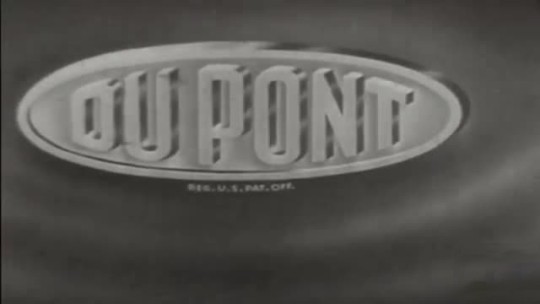
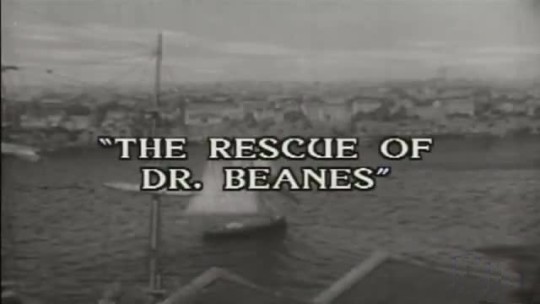
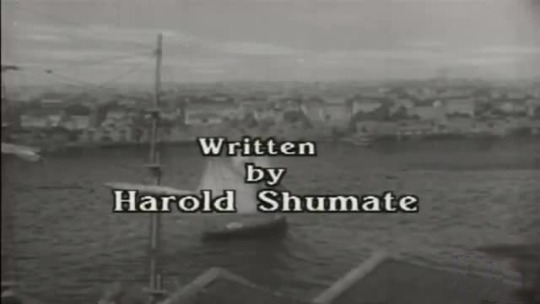




The Rescue of Dr. Beanes - ABC - June 21, 1955
A presentation of "The Cavalcade of America"
Historical Drama
Running Time: 30 minutes
Stars:
Donald Murphy as Francis Scott Key
Paula Raymond as Polly Key
Byron Palmer as Ferdinand Durang
Anthony Eustrel as Alexander Cochrane
Griff Barnett as Dr William Beanes
Barry Bernard as George Cockburn
Jonathan Hale as James Madison
Sam Flint as Nicholson
Christopher Dark as Richard West
Robin Hughes as British Colonel
Philip Tonge as Robert Ross
Clark Howat as John Stuart Skinner
Richard Reeves as British Sergeant
The story of how Francis Scott Key came to write the poem "Defence of Fort McHenry" which became "The Star Spangled Banner", the national anthem of the United States of America.
1 note
·
View note
Text
NEA District Fair announces 2022 entertainment lineup
NEA District Fair announces 2022 entertainment lineup
Monday, September 26: 7:00 REWIND BAND ARKANSAS Richard, Randy, Darrell and Bob make up the four-piece band REWIND playing their mix of classic country and rockabilly. Rewind Tuesday, September 27: 7:00 Griff the Drifter Nine-year old Griffin Evans, “Griff the Drifter”, is a fourth grader at Trumann Elementary School. He got his nickname from his good friend, John Barnett.…

View On WordPress
0 notes
Text
Sierra 1950
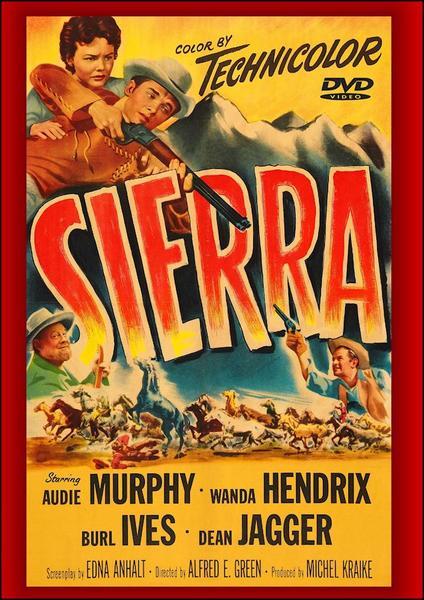
#sierra#audie murphy#dean jagger#burl ives#wanda hendrix#elisabeth risdon#tony curtis#james arness#john doucette#richard roper#roy roberts#elliott reid#sara allgood#griff barnett#erskine sanford#houseley stevenson#gregg martell#i stanford jolley#ted jordan#jack ingram#westerns#old west#western#western movie#western movies
13 notes
·
View notes